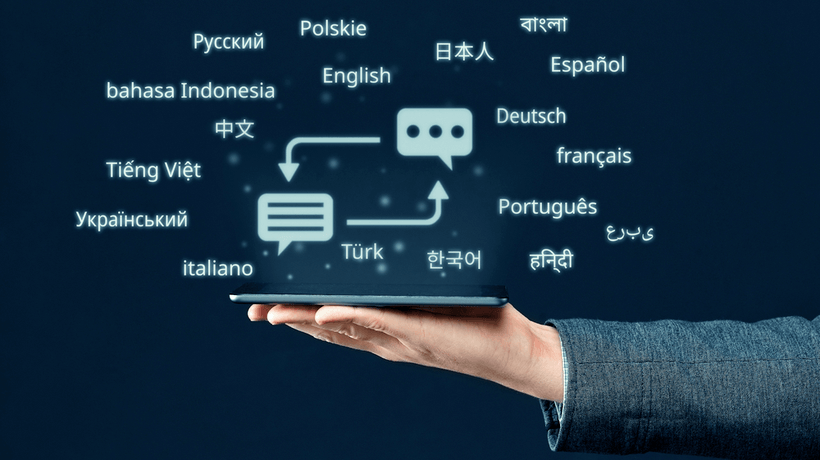Localizing eLearning Content And Globalizing A Brand Are Of Equal Importance
In the last two decades, globalization has provided the opportunity for many countries to expand their products or services into new countries and cultures. But, this expansion has not been without missteps, even by some of the biggest brands in history. In addition, these examples provide us with important lessons, particularly for companies who want to create or replicate Learning and Development initiatives in new countries. Let’s see how.
History is littered with brand names, logos, and taglines that were translated but not localized. Consequently, these brands completely missed their mark in the new target cultures. These examples show how words that are simply translated into another language without "in-country vetting" of the phrase’s true meaning and/or connotation, can be a multi-million dollar mistake. As much as international marketing classes teach the concept of language examination before launch, we still have our modern day classics:
- Coors translated its slogan, "Turn It Loose", into Spanish, which turned out to be a colloquial term for "suffering from diarrhea".
- KFC’s slogan of "finger licking good" was originally translated into Chinese as "eat your fingers off".
- HSBC Bank finally scrapped a $10M rebranding campaign (2009) after discovering that its tagline "Assume nothing" was translated in multiple languages/countries as "Do Nothing".
- Mercedez Benz entered the Chinese market with the brand name of "Bensi" not realizing that it means "Rush to die".
- The American Dairy Association replicated its "Got Milk?" campaign in Spanish-speaking countries with a phrase that means "Are You Lactating?".
- Frank Perdue's tagline, "It takes a tough man to make a tender chicken", got translated into Spanish as "It takes a sexually stimulated man to make a chicken affectionate".
- Proctor & Gamble used their classic animated visual of a stork bringing a baby to parents when introducing Pampers in Japan. When the brand did not catch on, P&G investigated. Japanese parents were confused by the stork picture since in their folklore giant floating peaches bring babies to parents.
What does this list of "lost in translation" examples have to do with eLearning content? Global corporations are wiser these days by utilizing in-country marketing experts to create or review their slogans and marketing campaigns prior to launch. This improves learning efficacy, protects a company’s reputation, and strengthens the opportunity to achieve strategic expansion/growth objectives. Corporate learning content may not be subject to public humiliation if poorly localized, but aren’t some of the same issues at stake? How do we gain the trust of our global employees, our teammates, if we don’t even think for even a few hours how to present learning content in ways that will truly engage them? Or, at least how to not offend them?
Authentic localization of learning content is a process that draws learning experts into the early stages of localization much like marketing experts review and challenge slogan translations. In-country learning experts know the culture, the language is native to them, and they are keenly aware of techniques that grab attention, and, those that may repel the target audience. These experts offer critical substitution ideas on some occasions and simple subtle modifications on others. In some cases, they may recommend that we contact key individuals within the target group and experiment with re-creating the source content before starting the translation of words. They are thought leaders on the effects of specific games, emotional impacts of visual content, and even can settle choices between appropriate voice artists.
What are the recommendations we have heard from in-country learning experts?
- One of the strategic trends of the past two years has been the rise of microlearning modules in the range of 2-5 minutes in length. Compact and concise, this on-demand library of single-skill modules makes sense for how Americans like to learn on the run. Yet, we know that Japanese learners look at training from a different point-of-view. In their culture, a valuable training session should contain all the information they need to be accomplished in the topic. This should be the classic 20-40 minute learning experience. Anything less is considered a cheap off-shoot.
- On a fairly regular basis, we work with a client’s employees in a target culture to accurately translate and localize source content developed in the USA. Although we work to iron out all style preferences in the translation process, there remains a general discontent with the localized content. The problem? The source content does not reflect how they want to communicate the key principles. Whereas speed is a core value to the U.S. culture, Germans want the core value of precision and quality to be emphasized as the higher priority.
These examples are just 2 of many where an experienced localization company dedicated to the outcomes of comprehension and practice can make a significant difference in the results achieved through corporate learning modules.
FAQs
- Is this authentic localization process expensive? No.
- Does it slow down the turnaround time of new localized products? No.
- Does it create more work for the Project Manager in charge? No.
Then, what is keeping companies from utilizing this process for a better localization experience for all? Nothing really… except for the knowledge that a better system does exist.









